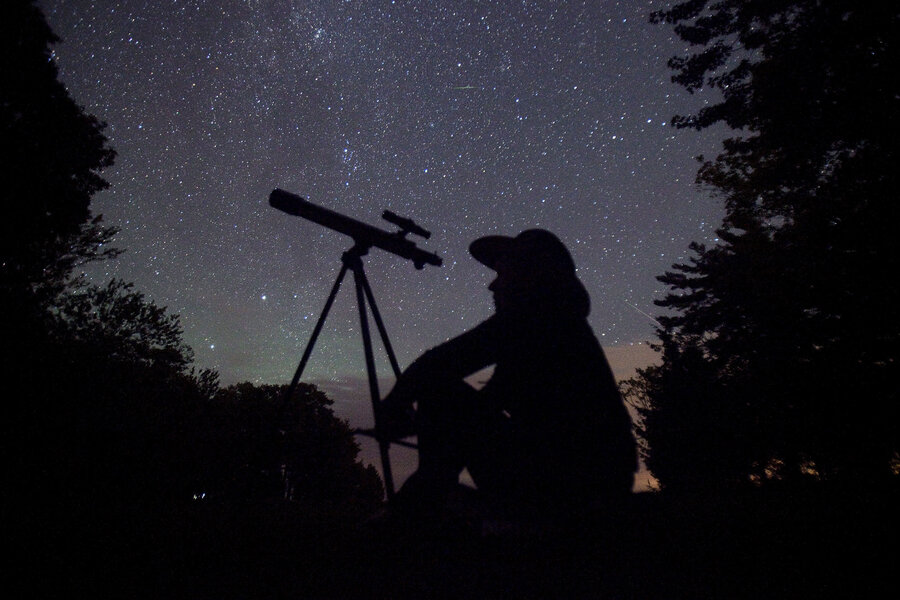How to see tonight's spectacular Perseid meteor shower
Loading...
The annual Perseid meteor shower is expected to be bigger and better than usual this year, as astronomers say the number of meteors could more than double.
On the Perseids peak nights of August 11 and 12, observers may be able to see as many as 200 meteors per hour, according to Bill Cooke, the lead of NASA’s Meteoroid Environments Office in Huntsville, Ala. An "outburst" of this kind has not been seen since 2009.
"This year, instead of seeing about 80 Perseids per hour, the rate could top 150 and even approach 200 meteors per hour," Dr. Cooke told Space.com.
As The Christian Science Monitor's Simone McCarthy reports:
The Perseid shower may look like a pack of tiny comets crossing the night sky, but in actuality they are the result of the Earth crossing a trail of comet dust. The Swift-Tuttle comet orbits the sun every 133 years: as it does, it leaves a path of debris behind it, which we run up against annually.
When the Earth brushes up against this trail, the debris that hits our atmosphere disintegrates, causing the flashes of light visible from Earth. These pieces of comet dust entering the atmosphere are called meteors. They can be as small as a grain of sand, according to Space.com, but they are traveling at speeds of 132,000 miles per hour.
The Perseids are named for the constellation Perseus, near which the meteors appear.
This year, Jupiter's gravity will pull the trail closer to us, causing the Earth to hit a denser part of the stream than usual and resulting in a more spectacular show.
The shower technically begins around July 17 and ends in late August. The peak nights for viewing the outburst are August 11 and 12. The ideal time for stargazers to look up is Thursday night, just after your local midnight (early Friday morning), though the previous or following nights will likely work as well.
In order to get the best view of the sky, try to stay away from buildings, trees, and city lights. Because you want to see as much sky as possible, using binoculars or a telescope is not recommended.
If you don't see any meteors right away, don't panic: it takes about half an hour for your eyes to fully adjust to the darkness. Expect to see about one meteor per minute – or more.
For those whose view is obstructed by cloudy skies, NASA will live-stream the shower.






